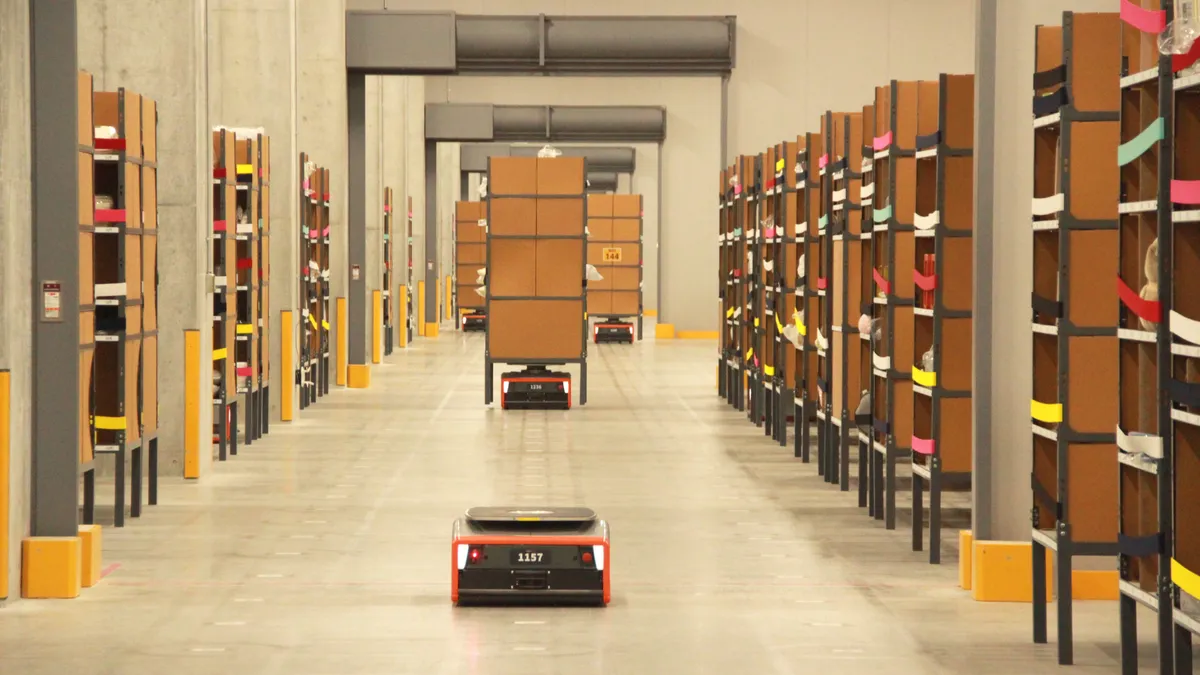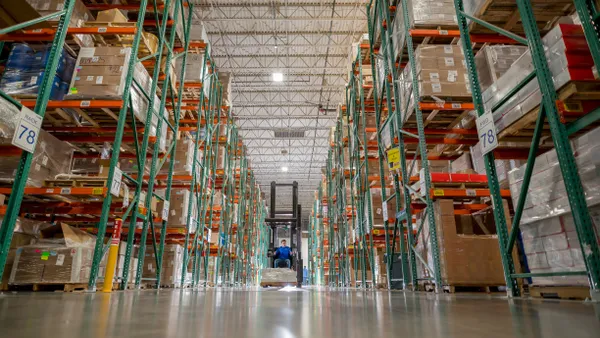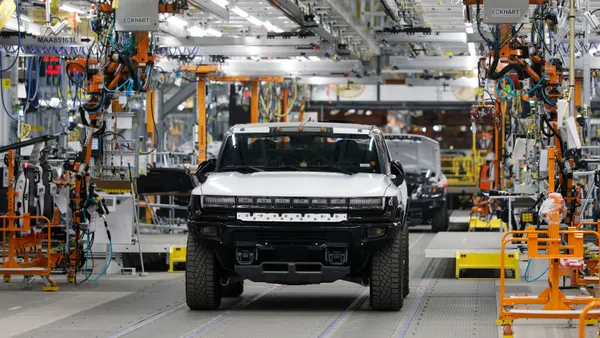Dive Brief:
- Multiple companies in the warehouse robotics space have raised tens of millions of dollars in funding over the last couple of years, according to a review conducted by Supply Chain Dive.
- GreyOrange, a Singapore-based company, is one of the leading companies in terms of total funding, having brought in $170 million in investment, according to numbers from Crunchbase.
- Gartner listed picking robots as "on the rise" in its most recent "Hype Cycle for Supply Chain Execution Technologies" report and said autonomous mobile robots (AMRs) were now "at peak." "AMRs will continue to gain traction in complex distribution centers," Gartner wrote in its report. "The same technologies will emerge and also have applications outside warehouses as the technology matures. For example, in retail stores there is the potential that an AMR could unload trucks and deliver palettes of goods to specific departments in a store without human intervention."
Dive Insight:
Large e-commerce companies have been among the most interested in robotics technology. Amazon acquired Kiva Systems in 2012 and renamed it Amazon Robotics. Amazon took the Kiva machines off the market, keeping the technology for itself, and now has tens of thousands of robots operating in its fulfillment centers across the country.
When Amazon purchased Kiva, it opened up the market for new competition, and those companies are now bringing in millions of venture capital.
Amazon has made investments in other robotics companies recently including Balyo and Canvas. Flipkart's co-founder participated in the most recent round of funding for GreyOrange, according to TechCrunch. Flipkart has also started using automated tools to help fulfill online orders.
This comes at a time when experts are forecasting a lot of growth in this industry — one report put the number at 50,000 warehouses using robotics by 2023, up from 4,000 in 2018.
The use of robotics in Amazon facilities brought down the average time it took to get an item from the shelf to a box to 15 minutes from 30 minutes, Rob Bogue, an independent consultant and associate editor of Industrial Robot, wrote in the 2016 paper " Growth in e-commerce boosts innovation in the warehouse robot market." This has also allowed Amazon to store more inventory in its facilities and reduce operating costs, according to Bogue.
While e-commerce may have paved the way for this kind of technology, its not the only type of warehousing operation that's interested in robotics, CEO of Fetch Robotics Melonee Wise told Supply Chain Dive earlier this year.
"There are countless warehouses and logistics facilities looking at AMRs that aren’t categorized as e-commerce," Wise said in an email. "From what I’m seeing, the biggest impact on growth facing our customers is the extraordinary shortage of workers."
But the use of robotics is still not widespread throughout the warehousing sector. Just 17% of respondents are currently using robotics for materials handling applications and another 16% are not using it but plan to evaluate it in the next two years, according to a survey done by Peerless Research Group for Modern Materials Handling. (The survey was an email questionnaire that resulted in 246 qualified responses defined as managers and personnel involved in the purchase decision process for materials handling solutions. The survey was conducted at the end of 2018 and the beginning of 2019.)
Right now, a lot of robotic solutions are used to move shelving or entire boxes. One application that is still beyond the capabilities of many robots is picking, though this has been successfully demonstrated in recent years.
"Warehouse humanoid robots will transform warehouse operations over the coming decades as the costs and complexities come down, which will open up the market to more companies," Gartner wrote in its report of picking robots, adding that labor cost and availability is a major driving factor for implementation.
The introduction of picking robots and AMRs into warehouses will just be the first step. Companies are likely on a path to automate the entire process of order fulfillment, according to Bogue.
"In a future scenario, on receipt of an order from the warehouse management system, robots would automatically locate, pick and transport the required items to a station where other robots, perhaps cobots, would package them for dispatch and delivery," he wrote.
This story was first published in our weekly newsletter, Supply Chain Dive: Operations. Sign up here.















